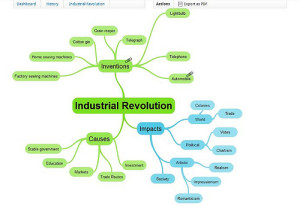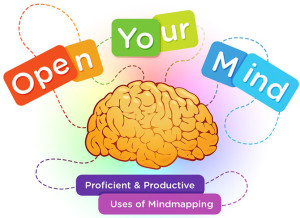Mindmapping Instead of Outlining by Meggin McIntosh, PhD
 I have been a big fan of mindmapping for many years. I think it is underutilized and in the world of coaching, mindmapping offers tremendous possibilities for you and your clients. Recently, I did a mindmap to answer the question, “Why mindmap?” because so many people are still new to this way of thinking about, generating, and organizing ideas. I hve taken my mindmap and organized it as a top ten (linear format) here:
I have been a big fan of mindmapping for many years. I think it is underutilized and in the world of coaching, mindmapping offers tremendous possibilities for you and your clients. Recently, I did a mindmap to answer the question, “Why mindmap?” because so many people are still new to this way of thinking about, generating, and organizing ideas. I hve taken my mindmap and organized it as a top ten (linear format) here:- Mindmapping taps into the creative portions of our brain. And don’t we all know we need those portions tapped into?
- Mindmapping is structured more like the brain is structured. When you see diagrams of the brain – with the neurons and dendrites – it looks like a mindmap. I have never seen a diagram representing the brain that looks like an outline. Our brains don’t work in a linear fashion, so trying to generate ideas linearly isn’t particularly productive.
- With mindmapping, it is so easy to just keep adding ideas to your map. With outlining, it is more difficult – plus there is always the nagging worry about whether something should be an A or an a – and that if there’s an A, there has to be a B. With mindmapping, you don’t spend any mental energy worrying about that.
- You can change the structure of your mindmap as needed. It’s one of the reasons you want to have a big piece of paper (or tape to add more paper to the edges as needed). When you are mindmapping using software, you can easily restructure the way your map is configured.
- Mindmapping feels (and is) less restrictive and less limiting than outlining. Whether you perceive yourself as creative or not, I guarantee you will be more creative when you use a mindmap (vs. an outline or list).
- When you are working with a partner on a project, a mindmap lends itself to collaboration more than an outline does. Because of the structure and the options you have for where to put ideas and/or draw connections between and among ideas, mindmapping works well with more than one person participating.
- Mindmapping helps you make connections that you would be less likely to make if you were just making a list or outlining. Just as your brain makes linkages between and among ideas, viewing a mindmap provides that opportunity as well.
- Most mindmaps can fit on one sheet of paper. It’s hard for me to describe this here because I’m using a linear format, but if you take a look at others’ mindmaps, you will see the extraordinary complexity that can be contained on just one page. With an outline…once you get into extensive and/or complex ideas, you run out of room.
- Mindmaps can be adapted to be playful or serious, depending on your needs.
- Mindmaps can be simple or complex. You can use a mindmap to work on something very simple and then just abandon the map because your thinking has now been sparked. OR, you can continue to work with and refine a mindmap to explore very complex and intricate thinking and learning. Mindmaps are a flexible tool.
And a suggestion to you if you are reasonably unfamiliar with mindmaps. Google “mind map” or “mindmaps” and see what you can find. You will see that there are an array of different ways that mindmaps can be constructed. Hmmm….It’s similar to the fact that are brains are also wired (constructed) in so many ways. Must be a connection…
© Meggin McIntosh, Ph.D. | Emphasis on Excellence, Inc. | www.meggin.com
Meggin works with bright people through workshops, speaking, consulting, and coaching to support their quest for peaceful, predictable productivity. The end result is that these great folks can now consistently keep their emphasis on excellence. It’s a great life!!
 And to help you generate those ideas for your next project you will want to access the class Proficient & Productive Use of Mindmapping Open Your Mind! which offers ideas and strategies for how to integrate mindmapping into your thinking and problem-solving.
And to help you generate those ideas for your next project you will want to access the class Proficient & Productive Use of Mindmapping Open Your Mind! which offers ideas and strategies for how to integrate mindmapping into your thinking and problem-solving.


